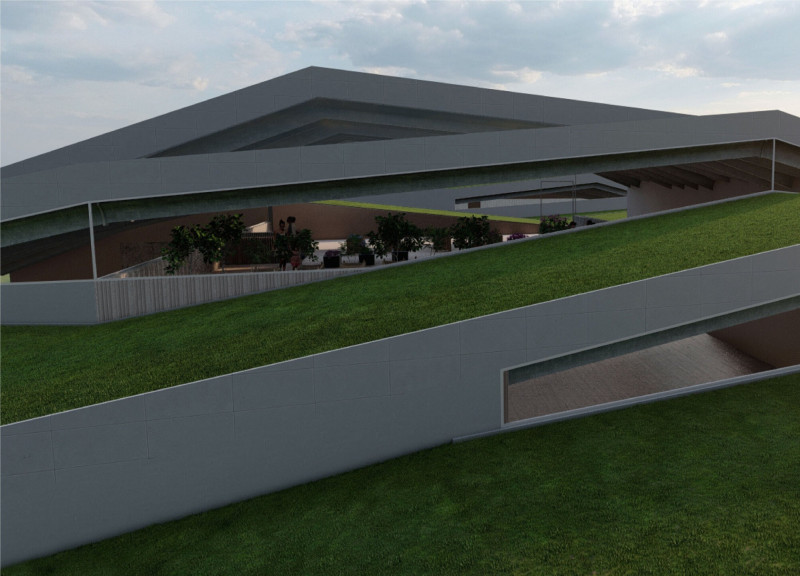5 key facts about this project
The architectural design known as "FRÁ JÖRÐUNNI" is set in an urban environment and functions as a community hub. The design concept focuses on an almost column-free structure that promotes openness and connectivity within the space. By framing a central area for community use, the building encourages social interaction and highlights its relationship with the surrounding landscape.
Structural Framework
Concrete concourse beams form the primary structural system, extending from the foundation and cantilevering the roof. This approach allows the building to appear as if it is emerging from the ground. The absence of columns in the central space enhances the feeling of openness, creating an environment where movement and interaction can take place freely.
Functional Layout
The heart of the design is an open area dedicated to various community activities. This space connects essential components such as an open kitchen, a fabrication lab, a resource exchange, a recycling area, a kids’ area, and an information desk. By linking these functions, the design promotes engagement and supports the building's role as a center for social gathering and collaboration.
Private Zones
Adjacent to the central area are private zones, including a sauna/showers and a depot, which are designed to cater to individual needs while remaining accessible. The depot includes a drop-in area for visitors to deposit recycling items and resources, which enhances efficiency. This thoughtful arrangement of spaces balances the need for public engagement with the importance of personal privacy.
Green Integration
Sustainability plays a key role in the design, exemplified by the greenhouse located on the second level. This feature creates a connection to the green roof, allowing users to engage with nature. The green roof not only adds to the visual appeal of the structure but also supports biodiversity and promotes ecological awareness within the community. The design integrates the built environment with the natural landscape, creating a harmonious relationship between the two.






















































